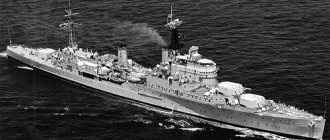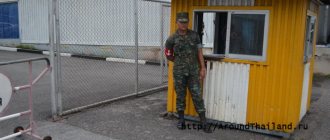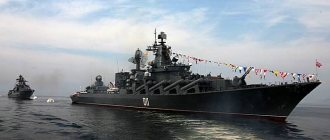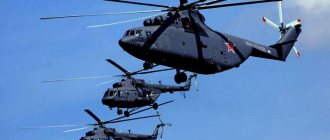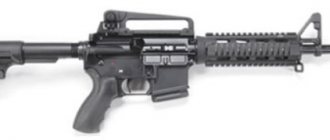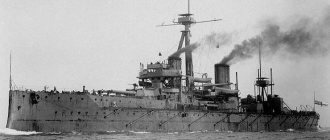This article is about the modern German Navy and the post-war West German Navy. For the German Navy of World War I, see Imperial German Navy. For the interwar fleet of the Weimar Republic, see Reichsmarine. For the German navy of World War II, see Kriegsmarine. For other uses, see German Navy (disambiguation).
Naval military branch of the German armed forces
| This article raises many issues. Please help | This article requires additional links for verification . |
| This article needs editing to conform to the Wikipedia Style Guide. Please help improve it if you can. |
(Learn how and when to remove this message template)
| naval | |
| nautical | |
| Based | January 2, 1956 ; 65 years ago (1956-01-02) |
| A country | Germany |
| Type | naval |
| Size | 16,704 people (April 2022) [1] 65 ships 56 aircraft |
| Part | Bundeswehr |
| German Navy Headquarters | Rostock (Navy Command) |
| Motto(s) | Wir. Dinen. Deutschland . (We. Serve. Germany.) |
| march | "Gruß an Kiel [ ] " |
| Anniversaries | 14 Jun |
| Engagements |
|
| Web site | www.marine.de |
| Commanders | |
| Navy Inspector | Vice Admiral Andreas Krause |
| Deputy Inspector of the Navy | Vice Admiral Rainer Brinkmann |
| Chief of staff | Rear Admiral Karsten Schneider |
| Notable commanders |
|
| Marks of Excellence | |
| Naval ensign | |
| German fleet Deutsche Marine | ||||||||||||||||||
| ||||||||||||||||||
German fleet
(German:
Deutsche Marine
, officially German:
Maritime
listen (help info)) is the German navy and part of the unified
Bundeswehr
(Federal Defense) armed forces of Germany.
The German Navy was originally known as the Bundesmarine
(Federal Navy) from 1956 to 1995, when
the Deutsche Marine
(German Navy) became an unofficial name due to the incorporation of the East German
Volksmarine
(People's Navy) in 1990. It is deeply integrated into the NATO alliance. Its main task is to protect Germany’s territorial waters and maritime infrastructure, as well as maritime communications. In addition, the German Navy participates in peacekeeping operations, provides humanitarian assistance and disaster relief. They are also involved in anti-piracy operations. [2]
Karl Denasuitz
In the summer of the same 1935, the Fuhrer appointed Karl Dönitz as commander of all submarines of the Reich; he held this post until 1943, when he was appointed commander-in-chief of the German Navy. In 1939, Dönitz received the rank of rear admiral.
He personally developed and planned many operations. A year later, in September, Karl becomes vice-admiral, and after another year and a half he receives the rank of admiral, at the same time he receives the Knight's Cross with Oak Leaves.
It is he who owns most of the strategic developments and ideas used during submarine wars. Dönitz created a new supercaste, the “unsinkable Pinocchios,” from his subordinate submariners, and he himself received the nickname “Papa Carlo.” All submariners underwent intensive training and knew the capabilities of their submarine thoroughly.
Dönitz's submarine combat tactics were so talented that they received the nickname "wolf packs" from the enemy. The tactics of the “wolf packs” were as follows: the submarines lined up in such a way that one of the submarines could detect the approach of an enemy convoy. Having found the enemy, the submarine transmitted an encrypted message to the center, and then it continued its journey in a surface position parallel to the enemy, but quite far behind him. The remaining submarines were centered on the enemy convoy, and they surrounded it like a pack of wolves and attacked, taking advantage of their numerical superiority. Such hunts were usually carried out in the dark.
Construction
The German Navy had 31 combat and training submarine fleets. Each of the flotillas had a clearly organized structure. The number of submarines included in a particular flotilla could vary. Submarines were often withdrawn from one unit and assigned to another. During combat trips to sea, command was occupied by one of the commanders of the submarine fleet task force, and in cases of very important operations, the commander of the submarine fleet, Befelshaber der Unterseebote, took control.
Throughout the war, Germany built and fully equipped 1,153 submarines. During the war, fifteen submarines were seized from the enemy, they were introduced into the “wolf pack”. Turkish and five Dutch submarines took part in the battles, two Norwegian, three Dutch and one French and one English were training, four Italian were transport and one Italian submarine was docked.
As a rule, the main targets of Dönitz's submarines were enemy transport ships, which were responsible for providing the troops with everything they needed. During a meeting with an enemy ship, the main principle of the “wolf pack” was in effect - to destroy more ships than the enemy could build. Such tactics bore fruit from the first days of the war across vast expanses of water from Antarctica to South Africa.
Requirements
The basis of the Nazi submarine fleet were submarines of the 1,2,7,9,14,23 series.
At the end of the 30s, Germany mainly built submarines of three series. The main requirement for the first submarines was the use of submarines in coastal waters, such were the second class submarines, they were easy to maintain, well maneuverable and could dive in a few seconds, but their drawback was a small ammunition load, so they were discontinued in 1941.
During the battle in the Atlantic, the seventh series of submarines was used, the development of which was originally carried out by Finland; they were considered the most reliable, since they were equipped with snorkels - a device thanks to which the battery could be charged under water. In total, more than seven hundred of them were built. Submarines of the ninth series were used for combat in the ocean, since they had a long range and could even sail into the Pacific Ocean without refueling.
Links[edit]
- ^ ab "Aktuelle Personalzahlen der Bundeswehr [Current personnel strength of the Federal Defense]". Retrieved May 28, 2020.
- "Archival copy". Archived from the original on March 31, 2022. Retrieved March 30, 2022.CS1 maint: archived copy as title (link)
- "Bilanz und Ausblick". Archived from the original on January 1, 2009. Retrieved December 18, 2009.
- Deutsche Marine - press release: Neues Nato-Expertenzentrum an der Kieler Förde nimmt Fahrt auf; Faermann, 2009
- "Ships Chartered for Project ARK". Archived from the original on June 8, 2011. Retrieved October 27, 2010.
- "Project ARK". Archived from the original on November 28, 2010. Retrieved October 27, 2010.
- "Inspekteur der Marine: Zielvorstellung Marine 2025+" (PDF). Geopowers.com
. Archived (PDF) from the original on June 1, 2010. Retrieved March 14 +2016. - https://www.flugrevue.de/militaer/unbemanntes-fluggeraet-von-aerovironment-puma-ae-fuer-die-marine/
- https://dipbt.bundestag.de/doc/btd/19/010/1901082.pdf
- Thomas Weigold (July 31, 2019). "Sea solution NH90-Hubschrauber als Ersatz für SeaLynx bekommen (m. Nachtrag)". Augen geradeaus! . Retrieved August 7, 2022.
- damen.com - DAMEN AND BLOHM + VOSS SELECTED FOR CONSTRUCTION OF GERMAN FRIGATES MKS180
(January 14, 2022). - Nachrichtenfernsehen, n-tv. "Marine U36 in Dienst: Bundeswehr bekommt neue U-Boote". n-tv.de
. Archived from the original on October 13, 2016. Retrieved November 8 +2016. - "The coalition will Boote kaufen: Bundeswehr soll fünf neue Korvetten bekommen". Frankfurter Allgemeine Zeitung
. October 14, 2016 ISSN 0174-4909. Archived from the original on October 15, 2016. Retrieved November 8 +2016. - "Archival copy". Archived from the original on September 30, 2022. Retrieved September 30, 2022.CS1 maint: archived copy as title (link)
Complexes
The construction of a huge submarine flotilla implied the construction of a complex of defense structures. It was planned to build powerful concrete bunkers with fortification structures for minesweepers and torpedo boats, with firing points and shelters for artillery. Special shelters were also built in Hamburg and Kiel at their naval bases. After the fall of Norway, Belgium and Holland, Germany received additional military bases.
So for their submarines the Nazis created bases in Norwegian Bergen and Trondheim and French Brest, Lorient, Saint-Nazaire, Bordeaux.
In Bremen, Germany, a plant was installed for the production of series 11 submarines; it was installed in the middle of a huge bunker near the Weser River. Several bases for submarines were provided to the Germans by the Japanese allies, a base in Penang and on the Malay Peninsula, and an additional center for the repair of German submarines was equipped in the Indonesian Jakarta and the Japanese Kobe.
Further reading (COE CSW)[edit]
- Jan Wiedemann: CSW Council of Europe celebrates its fifth anniversary; in: NAVAL FORCES III / 2014 p. 90 f.
- Hans-Joachim Stricker: Center of Excellence for Operations in Confined and Shallow Waters, CSW COE - Das COE als Ausdruck unserer besonderen nationalen Fähigkeiten im Bündnis; in: Marineforum 6-2007 p. 3 f.
- Fritz-Rudolf Weber: Center of Excellence for Confined and Shallow Water Operations - Think Tank for NATO; in: Marineforum 1/2-2010 p. 11 words
- Hans Georg Buss, Stefan Revesell: Naval IEDs and harbor defense: a joint effort; in: Transformer Autumn 2013 Volume 9 Issue 2 p. 18
- Rahn, Werner. "The German Navy from 1848 to 2016: Its Development and Course from Confrontation to Cooperation." Naval War College Review
70.4 (2017). online
Armament
The main weapons of Dönitz's submarines were torpedoes and mines, the effectiveness of which was constantly increasing. The submarines were also equipped with 88 mm or 105 mm caliber artillery guns, and 20 mm anti-aircraft guns could also be installed. However, starting from 1943, the artillery guns were gradually removed, since the effectiveness of the deck guns decreased significantly, but the danger of an air attack, on the contrary, forced the power of anti-aircraft weapons to be strengthened. To effectively conduct underwater combat, German engineers were able to develop a radar radiation detector, which made it possible to avoid British radar stations. Already at the end of the war, the Germans began to equip their submarines with a large number of batteries, which allowed them to reach speeds of up to seventeen knots, but the end of the war did not allow them to rearm the fleet.
Braunschweig
This is the first series of battleships built according to the 1898 program. They differed from their contemporaries in a fairly developed armor system, a more powerful steam engine and a speed increased by 2 knots. The use of turrets to house four of the fourteen 17 cm guns was criticized by some foreign naval specialists who saw design errors in the design of the turrets.
Squadron battleship Lothringen
The length of the new battleships (127.7 m) differed slightly from the previous Kaiser Friedrich III and Wittelsbach series (125.3 m and 126.8 m, respectively). But in terms of their displacement of 14,400 tons, they were significantly superior to their predecessors (11,600 tons and 12,600 tons), primarily due to heavier guns and more solid armor. The ships had thirteen watertight compartments and a double bottom that extended 60 percent of the hull's length.
The ships were described as good seagoing vessels with excellent seaworthiness, but in high seas they were prone to wild rolling. The new battleships handled perfectly and had a small turning radius at low speed, but when the rudder was sharply shifted by more than 12 degrees, the ships lost up to 70 percent of their speed.
Braunschweig-class battleships had three triple expansion steam engines with a design power of 16,000 indicator hp. (11900 kW), steam for which was produced by 14 boilers (8 so-called “sea” type and 6 “cylindrical” type), which was a common practice of the German fleet. The battleships used a three-screw design with one control rudder, already classic for German ships. The two outer propellers were three-bladed, and the central one was four-bladed. The maximum speed under the contract was estimated at 18 knots. However, during testing, steam engines also showed greater power (16400 16980 ind.hp 12200...12660 kW), and the maximum speed exceeded the contract (18.2 18.7 knots). The ships had a fuel capacity of 5,200 nautical miles at a cruising speed of 10 knots, with the exception of Hessen. It suffered from unstable steering, which increased fuel consumption and reduced its cruising range to 4,530 nautical miles.
Squadron battleship Lothringen
The armor of the ships was carried out with armor plates, hardened using the Krupp method and produced at the enterprises of the same name. The horizontal deck was covered with 40 mm armor. On the slopes, the thickness of the armor ranged from 75 mm (at the extremities) to 140 mm (in the middle of the ship). The thickness of the main armor belt was 250 mm (9.8 in). The front conning tower was protected by 300 mm armor, and its roof was covered with 50 mm armor plates. The aft deckhouse was weakerly armored - 140 mm wall armor and 30 mm roof armor. Above the main side belt there was an upper armor belt with an armor thickness of 140 mm. The main caliber gun turrets had 250 mm wall armor and 50 mm roof armor. The turrets and casemates of the medium-caliber guns were protected by 150 mm armor.
Despite the fact that the nominal thickness of the armor of German ships did not exceed that of British or Russian ones, the degree of elaboration of the security of the entire ship, the use of coal pits for torpedo protection and a fairly advanced unsinkability system favorably distinguished German battleships from their potential opponents.
The main armament of the ships was strengthened compared to previous series, but was still weaker than that of contemporary foreign battleships. The main armament was a battery of four 28 cm (11 in) SK L/40 guns, arranged in pairs in two turrets. This was a significant increase in firepower over the previous 24 cm (9.4 in) guns. But this was still quite modest compared to the 305 mm (12 in) guns used in the navies of England, France and Russia. The new guns had an inclination angle from -4° to +30°, which made it possible to have a maximum firing range of up to 18,800 meters with projectiles weighing 240 kilograms with an initial speed of 820 m/s. The ammunition capacity was 85 rounds per barrel.
Squadron battleship Deutschland
Medium-caliber artillery has undergone the greatest changes. Instead of the usual 15 cm guns, the new battleships were equipped with 17 cm (6.7 inches) Krupp SK L/40 guns, four of which were placed in single-gun turrets, and the remaining ten in casemates around the superstructure. It should be noted that other naval powers switched to an increased caliber of medium artillery very carefully, often combining the old proven 6-inch guns with new guns. The Germans, who “ate the dog” with numerous medium-caliber artillery, in this sense found themselves “ahead of the rest.” The new 17-centimeter guns sent 64-kilogram shells at the enemy with an initial speed of 850 m/s, which was undoubtedly more destructive for enemy ships than 40-kilogram 6-inch shells. The elevation angle for guns located in towers and casemates was different. If in the turret the elevation angle was the standard 30°, which made it possible to fire at a distance of up to 16,900 m, then the casemated gun had a maximum elevation angle of 22°, and, accordingly, its firing range was limited to 14,500 meters. Such inconsistency, of course, greatly complicated the work of the artillerymen and did not allow the introduction of a central guidance system, which was just beginning to appear at that time. The ammunition capacity was 130 rounds per barrel. An interesting detail - to pass the Kiel Canal, the three central 17-cm casemated guns had to be removed from their machines, because Otherwise, it was impossible to completely hide the barrel inside the body. And with the trunks sticking out of the casemates, the ship simply did not fit in the canal!
Mine artillery also consisted of the now traditional fourteen 8.8 cm (3.5 in) SK L/35 guns, located in casemates located along the entire length of the ship. These guns could send their 7 kg projectiles over a distance of 9090 meters (with a maximum angle of inclination of 250) with an initial speed of 770 m/s.
The armament of the battleships was completed by six 45-cm torpedo tubes with an ammunition capacity of 16 torpedoes.
Squadron battleship Deutschland
The lead ship of the Braunschweig series was laid down in Kiel in 1901, launched in 1902 and entered service in 1904. The ranks of the German fleet and its sisterships also quickly replenished: Elsass entered service in the same 1904, Hessen in 1905, Preussen in 1905 and Lothringen in mid-1906. Needless to say, only the shipyards of the “mistress of the seas” could compete with the newest German shipyards ! The long and painstaking work on building shipyards, which began with the first Sachsen ships, equipping them with the most modern equipment and achieving the highest professionalism of shipbuilders at the right time, yielded results! And when the Russian Imperial Fleet ceased to exist in Tsushima, and the French was in a comatose state, the German fleet, quite suddenly for ordinary people, suddenly began to lay claim to second place in the world and to the role of master of not only the Baltic, but also the entire Atlantic (taking into account the fact that the British fleet was “smeared” throughout the World Ocean).
Fighting
Submarines took part in combat operations in 1939-1945 in 68 operations. During this time, 149 enemy warships were sunk by submarines, including two battleships, three aircraft carriers, five cruisers, eleven destroyers and many other ships, with a total tonnage of 14,879,472 gross register tons.
Sinking of the Coreages
The Wolfpack's first major victory was the sinking of the USS Coreages. This happened in September 1939, the aircraft carrier was sunk by the submarine U-29 under the command of Lieutenant Commander Shewhart. After the aircraft carrier was sunk, the submarine was pursued by accompanying destroyers for four hours, but U-29 was able to escape with almost no damage.
Destruction of Royal Oak
The next brilliant victory was the destruction of the Battleship Royal Oak. This happened after the submarine U-47 under the command of Lieutenant Commander Gunther Prien penetrated the English naval base at Scala Flow. After this raid, the British fleet had to be relocated to another location for six months.
Victory over Ark Royal
Another resounding victory of Dönitz's submarines was the torpedoing of the Ark Royal aircraft carrier. In November 1941, the submarines U-81 and U-205, located near Gibraltar, were ordered to attack British ships returning from Malta. During the attack, the Ark Royal aircraft carrier was hit; at first the British hoped that they would be able to tow the stricken aircraft carrier, but this was not possible, and the Ark Royal sank.
From the beginning of 1942, German submariners began to conduct military operations in US territorial waters. The cities of the United States were not dark even at night, cargo ships and tankers moved without military escort, so the number of destroyed American ships was calculated by the supply of torpedoes on the submarine, so the submarine U-552 sank seven American ships in one exit.
Ranks [edit]
Officers[edit]
| NATO code | OF-10 | OF-9 | OF-8 | OF-7 | OF-6 | OF-5 | OF-4 | OF-3 | OF-2 | OF-1 | OF (D) | Student officer | ||||||||||||||||||||||||
German fleet
| No equivalent | Enlisted rank plus star indicating cadet's career | ||||||||||||||||||||||||||||||||||
| Admiral | Vizeadmiral | Rear Admiral | Flottillen-admiral | Kapitän zur See | Fregatten- captain | Korvetten- kapitän | Stabskapitän - lieutenant | Captain-lieutenant | Oberleutnant zur See | Leutnant zur See | Oberfähnrich zur See | Fahnrich zur See | Seekadett | |||||||||||||||||||||||
Petty Officers and ordinary sailors[edit]
| NATO code | OR-9 | OR-8 | OR-7 | OR-6 | OR-5 | OR-4 | OR-3 | OR 2 | OR-1 | |||||||||||||||||||||||||||
German fleet
| ||||||||||||||||||||||||||||||||||||
| Oberstabsbootsmann | Stabsbootsmann | Hauptbootsmann | Oberbotsmann | Bootsmann | Obermaat | Maat | Oberstabsgefreiter | Stabsgefreiter | Hauptgefreiter | Obergefreiter | Gefreiter | Matrose | ||||||||||||||||||||||||
| German fleet (designated officer)
| No equivalent | No equivalent | ||||||||||||||||||||||||||||||||||
| Oberfähnrich zur See | Fahnrich zur See | Seekadett | ||||||||||||||||||||||||||||||||||
Equipment
To communicate with submarines, radiograms encrypted on a special Enigma encryption machine were used. Great Britain made every possible effort to obtain this device, since there was no other way to decipher the texts, but as soon as the opportunity arose to steal such a machine from a captured submarine, the Germans first destroyed the device and all encryption documents. However, they still succeeded after capturing U-110 and U-505, and a number of encrypted documents also fell into their hands. U-110 was attacked by British depth charges in May 1941, as a result of the damage the submarine was forced to surface, the Germans planned to escape from the submarine and sink it, but they did not have time to sink it, so the boat was captured by the British, and Enigma fell into their hands. and magazines with codes and maps of minefields. In order to keep the secret of the Enigma capture, the entire surviving crew of submariners was rescued from the water, and the boat itself was soon sunk. The resulting ciphers allowed the British to be aware of German radio messages until 1942, until Enigma was complicated. The capture of encrypted documents on board U-559 helped break this code. She was attacked by British destroyers in 1942 and taken into tow, and a new variation of Enigma was also found there, but the submarine quickly began to sink to the bottom and the encryption machine, along with two British sailors, sank.
Germany
True to their practice of loading shipyards, immediately after one of the battleships of the Braunschweig series left the slipway, the battleship of the next series, called Deutschland, was immediately laid down in its place. The series consisted of five ships: Deutschland, Hannover, Pommern, Schlesien and Schleswig-Holstein, laid down in 1903-1906. and entered service in 1906-1908. The battleships of the Deutschland series were the last German squadron battleships and the last series of ships laid down in accordance with the first “sea law” of 1898. The last two ships of this series were “stillborn”; by the time they entered service, dreadnoughts already reigned on the seas
Squadron battleship Preussen
And the casket opened simply. Alfred von Tirpitz was well aware that the Dreadnought was being built on the other side of the Channel. But the construction of ships of this class by Germany immediately required the expansion of the Kiel Canal and this, in turn, required an amount comparable to the annual budget of the entire Maritime Ministry. To stop the construction of battleships by a willful decision seemed to Tirpitz nothing less than sacrilege! As a result, when the last German battleship entered service, the first German dreadnought Nassau was already being completed at the quay wall!
Structurally, the Deutschlands were similar to the previous Brunswicks, although with noticeable changes especially in the area of armor and placement of medium-caliber artillery. After the laying of the lead ship of the series, the design of the remaining four was changed. This, first of all, affected the number of boilers (there are 8 boilers on the head ship, 12 on the remaining ships of the series) and an increase in the thickness of the armor in the main armor belt to 240 mm versus 225 mm, which corresponded to the armor of the Brunswicks.
The hull was assembled according to a mixed longitudinal-transverse design and divided into 12 waterproof compartments (“Pommern” 13). The double bottom extended over 84% of the hull length. By reducing the width of the hull (almost 2 m) and using more powerful steam engines, it was possible to increase the speed by a whole unit, and this with a greater thickness of the main armor belt and its greater length (along the entire length of the waterline).
Main caliber bow gun of the squadron battleship Preussen
Like the battleships of the previous series, the Deutschlands had three triple expansion steam engines, powered by three shafts that rotated three propellers. The two outer propellers were three-blade, 4.8 m in diameter. The central propeller had four blades with a diameter of 4.5 m. Steam for the Deutschland steam engines was produced, as on the Braunschwieg, by eight “marine” type boilers and six “cylindrical” boilers. The remaining ships of the series had twelve “marine” type boilers. The contract power of the power plant for the Deutschland was 16,000 ind.hp, while on the other four battleships it was 17,000 ind.hp. Despite this difference, the design speed for all ships was 18 knots, and on all five ships it was exceeded (as was the power of the steam engines). Let us note that the lack of power of steam engines during testing was commonplace in the Russian fleet...
The new battleships were not as easy to control as the previous Brunswicks, but at the same time they did not show such rolliness and such dependence of the speed on shifting the rudder. The cruising range was increased to 5900 miles with a cruising speed of 10 knots due to a larger supply of coal.
Squadron battleships of the High Seas Fleet in marching formation
The armament of the Deutschland class ironclads was almost identical to the Braunschweig class, but its arrangement was changed. The main armament consisted of four 28 cm SK L/40 guns, arranged in pairs in two turrets of the newly designed Drh.L model. C/01, which allowed the main battery guns to have an elevation angle ranging from +30° to -5°. At the maximum elevation of the barrel, shells could hit targets at a distance of up to 18,830 m. Shells weighing 240 kg were of high-explosive fragmentation and armor-piercing types. The initial speed for both types of projectiles was 820 m/s. At a distance of 12,000 m, armor-piercing shells could penetrate armor up to 160 mm thick.
The battery of medium-caliber guns consisted, as on the Brunswicks, of fourteen 17-cm guns. But, unlike the Brunswicks, which had all their guns located in a casemate, the Deutschlands had ten guns installed in the casemate of the upper deck and four one deck higher, in the superstructure. The location in the casemates allowed the guns to have an elevation angle from +22° to -5°. At the maximum elevation angle, the guns could hit targets at a distance of up to 14,500 m. The firing sector of each gun was 160°. The ammunition capacity of each gun was 130 shells. The rate of fire reached 5 rounds per minute.
Mine artillery was represented by twenty-two 8.8 cm cannons, which fired 14.8 kg high-explosive fragmentation shells at a distance of up to 11,000 m at a speed of up to 12 rounds per minute. The ammunition capacity was 140 rounds per barrel.
All battleships of the Deutschland class were armored with Krupp cemented armor, but the lead ship (Deutschland itself) was distinguished by a slightly different arrangement of the armor belt and different armoring of the citadel and superstructure. The waterline was protected by armor along its entire length. Above the main belt in the middle part between the bases of the towers there was a second belt (up to 170 mm), above which there was a third belt, which served as protection for the medium artillery battery.
Squadron battleships of the High Seas Fleet on maneuvers
The thickness of the Deutschland armor belt was 225 mm at the waterline and decreased to 140 mm at the lower edge. The armor belts of the remaining battleships had an increased armor thickness of up to 240 mm along the waterline and up to 170 mm along the lower edge of the armor belt. The Deutschland had citadel armor of 160 mm, while the other four ships had 170 mm. All five ships carried an armored deck, thickness from 40 mm to 70 mm, horizontal armor and with side bevels of 100 mm.
The main gun turrets had 280 mm armor for the turret walls and 50 mm for the roof. The barbettes of the main battery towers had 250 mm armor. The front conning tower had 300 mm armor, and the rear one had 140 mm armor.
Victory
During the war, German submarines were captured many times, some of them were also subsequently put into service with the enemy fleet, such as the U-57, which became the British submarine Graf, which carried out combat operations in 1942-1944. The Germans lost several of their submarines due to defects in the design of the submarines themselves. So the submarine U-377 sank to the bottom in 1944 due to the explosion of its own circulating torpedo; the details of the sinking are not known, since the entire crew also died.
Fuhrer's convoy
In the service of Dönitz, there was also another division of submarines, called the “Fuhrer Convoy”. The secret group included thirty-five submarines. The British believed that these submarines were intended to transport minerals from South America. However, it remains a mystery why at the end of the war, when the submarine fleet was almost completely destroyed, Dönitz did not withdraw more than one submarine from the Fuhrer Convoy.
There are versions that these submarines were used to control the secret Nazi Base 211 in Antarctica. However, two of the convoy's submarines were discovered after the war near Argentina, whose captains claimed to be carrying unknown secret cargo and two secret passengers to South America. Some of the submarines of this “ghost convoy” were never discovered after the war, and there were almost no mentions of them in military documents, these are U-465, U-209. In total, historians talk about the fate of only 9 out of 35 submarines - U-534, U-530, U-977, U-234, U-209, U-465, U-590, U-662, U863.
Sunset
The beginning of the end for German submarines was 1943, when the first failures of Dönitz’s submariners began. The first failures were due to the improvement of the Allied radar, the next blow to Hitler’s submarines was the growing industrial power of the United States, they managed to build ships faster than the Germans sank them. Even the installation of the latest torpedoes on the 13 series submarines could not tip the scales in favor of the Nazis. During the war, Germany lost almost 80% of its submariners; at the end of the war, only seven thousand were alive.
However, Dönitz's submarines fought for Germany until the last day. Dönitz himself became Hitler's successor, later arrested and sentenced to ten years.
